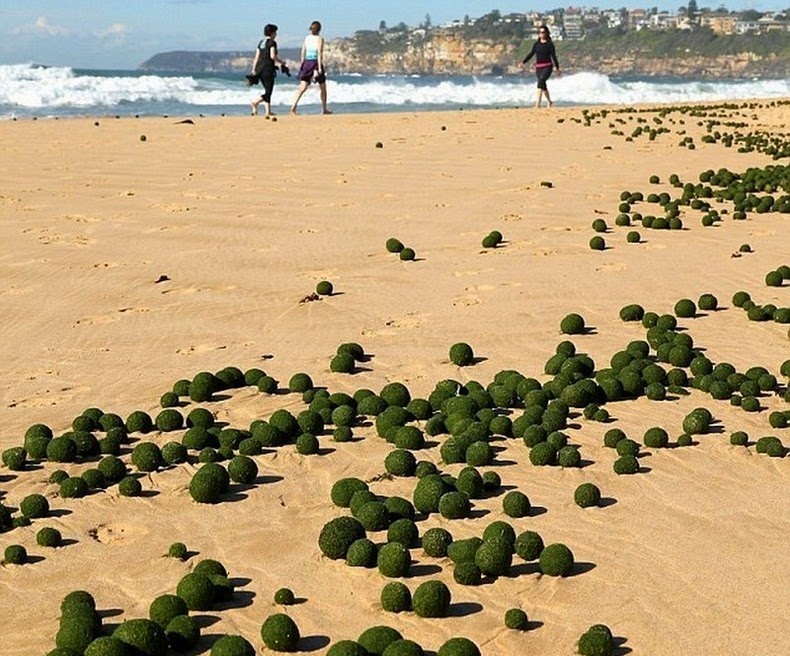Moss Balls or marimo (Japanese for "ball seaweed"), also known by various names such as Cladophora ball and Lake ball, is a species of filamentous green algae named Aegagropila linnaei that grow into large green balls with a velvety appearance. These balls grow to sizes of 12 to 30 cm across, depending on where you find them. Marimos are rare and is known to occur only in Iceland, Scotland and Japan, primarily Lake Akan in Japan and Lake Mývatn in Iceland. Recently, moss balls appeared in a large numbers on Dee Why Beach, in Sydney, the first such spotting of this algae in the southern hemisphere.
Marimo doesn’t grow around a core, such as a pebble. Instead, the algal filaments grow in all directions from the centre of the ball, continuously branching and thereby laying the foundation for the spherical form. Surprisingly, the ball is green all through, although light only reaches very short distance into the ball. The chlorophyll inside the ball remains dormant in the dark, but becomes active when exposed to light if the ball breaks apart. Moss balls are found submerged in the lake’s bed where the gentle wave action frequently turns them over maintaining its spherical shape, at the same time ensuring that they can photosynthesize no matter which side is turned upwards.
Marimo in a tank in Hokkaido, Japan. Photo credit
In Japan the marimo is protected and revered, and officially a natural treasure since 1920. At Lake Akan a great effort is spent on the conservation of the lake balls, that includes an annual three day marimo festival. Small hand rolled balls of free-floating filaments are sold in shops as souvenirs. Marimo is also a staple in many Japanese aquariums.
Meanwhile in Lake Myvatn, lake balls are slowly disappearing. About a decade ago, the lake balls in Lake Mývatn were two to three layers thick on the lake bottom. Today, they’re mostly gone. The disappearance is attributed to pollution caused by mining operation in the area that commenced in the 1960s. The large amount of phosphorous and nitrogen dumped into the lake have drastically increased the lake’s bacteria that feeds on those nutrients, swarming so densely that they blocked the sunlight that reached down to the lake’s bottom. With less sunlight, the algae began to die off, exposing more of the lake bottom’s loose sediment. The wind and the waves that once rolled the balls into their shape stirred the loose sediment covering the remaining algae, further depriving them of sunlight.
The marimo was given a status of protected species in Iceland in 2006, but it was already too late.
Marimo in Lake Akan. Photo credit
Marimo at Dee Why Beach, Sydney. Photo credit

Marimo at Dee Why Beach, Sydney. Photo credit
Tanks of Marimo at the Marimo Research Island, in Lake Akan. Photo credit
Marimo at Dee Why Beach, Sydney. Photo credit
Sources: Wikipedia / Natkop / Planet Experts





















Comments
Post a Comment